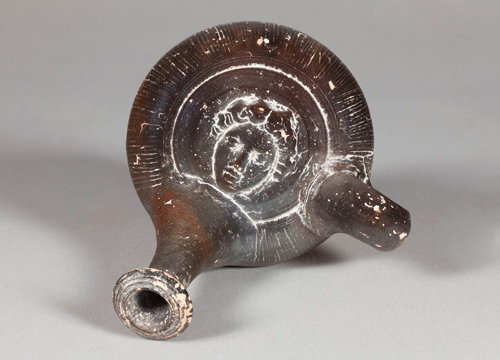Medusa was one of the three sister-monsters known as the Gorgons who lived at the edge of the world: Sthenno and Euryale were immortal but Medusa was mortal and thus could be killed. In early Greek art, they were often shown with huge tusks, extended tongues, snakes for hair, wings and staring eyes that could turn anyone looking at them into stone.
The hero Perseus, who was challenged to kill Medusa, was only able to overcome the monster with help from the gods. Later versions of the Perseus myth describe Medusa not as a hideous beast but as a woman of daling beauty, at once both fascinating and terrifying to behold. Although this Medusa may be beautiful, she still has two snakes tied beneath her chin to make it clear who she is.
The top of this black-gloss ceramic guttus is decorated with a medallion featuring the face of Medusa. A guttus was a household object, used every day for filling oil lamps. Oil was valuable and needed to be used sparingly: the guttus was designed so that the oil could be poured out slowly, drop by drop.

